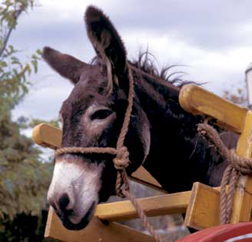 Mother Nature has been wreaking havoc for the past two weeks across a broad swath of the U.S. south of the Mason Dixon line.
Mother Nature has been wreaking havoc for the past two weeks across a broad swath of the U.S. south of the Mason Dixon line.
Today, farmers in southeastern Missouri face the possibility that the Army Corps of Engineers could blow up a critical levee on the Mississippi and flood 130,000 acres of their land in order to save the town of Cairo, Illinois.
Missouri, which considers the mule its official state animal, claims more river frontage than any other state, and Mississippi County, across the river from Cairo, claims more frontage than any other county in the state.
It is New Madrid County, downriver from Cairo, which holds a unique distinction, when it comes to natural disasters, as the epicenter of three major earthquakes that struck between December 16, 1811, and February 7, 1812.
The third quake, considered to be the most powerful to ever hit the U.S. – with a probable measurement of 8.9 on the Richter – heaved the Mighty Mississippi up with such force that for a day its waters appeared to flow backward.
When the tremors subsided, thousands of square miles of land had undergone topographical changes from huge fissures to vast sunken areas, including Reelfoot Lake in Tennessee.
Cairo, in the southernmost tip of Illinois, nests between the confluence of the Ohio and Mississippi Rivers on its east side and the Mississippi, which also flows along its west bank. Sixty percent of water that flows through the US eventually flows past Cairo.
Prior to the Civil War, Cairo served as a customs point for goods sent upriver from New Orleans. But in 1861, Federal troops set up a supply camp there for Ulysses S. Grant, who directed his first battle as a new Brigadier General just south of Cairo on November 9, 1861.
Cairo’s historic downtown was razed in the 1960s, and although the old Custom House has been restored as a museum and a few Victorian homes still stand along Millionaires Row, it is hard to imagine its great heyday, when steamboats ruled the Mississippi and mules were a farmer’s best friend.
Note: In 1924, Edna Ferber stayed in Cairo as she did research for her novel Showboat, which was later made into the broadway hit.
